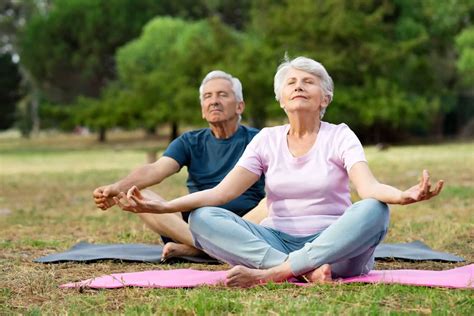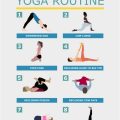Yoga for Seniors: Benefits, Risks, and Safe Practice Guidelines
Yoga has long been recognized as a powerful tool for improving both physical and mental well-being. However, with the elderly population in mind, the question arises: Is yoga safe for seniors? In this article, we will explore the topic from various angles, looking into the benefits, potential risks, safe modifications, and practical implementation guidelines for seniors to enjoy the practice safely and effectively.
Introduction
As the population ages, maintaining physical activity becomes increasingly important to ensure a higher quality of life. Yoga offers a gentle and holistic way to address physical and mental health challenges, including joint stiffness, balance issues, and mental well-being. But is yoga really suitable for the elderly, or could it pose risks that outweigh its benefits? This article will explore how seniors can benefit from yoga while mitigating potential dangers.
Key Concepts
Yoga is a multifaceted practice combining physical postures (asanas), breathing techniques (pranayama), and meditation. For seniors, it’s crucial to adapt the practice to focus on three main areas:
- Mobility: Yoga helps improve flexibility and range of motion, which is especially important as the body ages.
- Balance: One of the biggest concerns for seniors is falls. Yoga can enhance balance and coordination.
- Mental Well-being: Yoga promotes mindfulness, reduces stress, and alleviates symptoms of depression and anxiety.
Historical Context
Historically, yoga was developed over 5,000 years ago in India as a spiritual practice. While initially more focused on the mind and spirit, its benefits on the physical body became apparent over centuries. In the 20th century, yoga was adopted in Western countries as a form of exercise, and many scientific studies have since examined its health benefits, making it particularly popular among aging populations.
Current State Analysis
Today, yoga is practiced globally, with many classes and styles specifically catering to seniors. These classes often focus on gentle yoga, chair yoga, and restorative yoga to accommodate the unique needs of older adults. Research has demonstrated that regular yoga practice improves mobility, flexibility, and mental health in elderly populations, but concerns about potential injuries—particularly related to balance, joint strain, and cardiovascular health—persist.
Practical Applications
For seniors, practicing yoga can be highly beneficial, but it is crucial to follow a few guidelines to ensure safety:
- Choose the Right Style: Gentle yoga, chair yoga, or restorative yoga are ideal for seniors.
- Work with an Experienced Instructor: An instructor familiar with senior needs can help adapt poses and monitor physical limits.
- Use Props: Blocks, straps, and chairs can provide support and minimize injury risk.
- Listen to the Body: Seniors should avoid pushing themselves too hard and stop if they feel pain or discomfort.
- Focus on Breathwork: Controlled breathing can help improve lung capacity and reduce stress.
Case Studies
Numerous case studies have illustrated the positive effects of yoga on seniors:
| Study | Participants | Results |
|---|---|---|
| Smith et al. (2018) | 50 seniors, age 65-80 | Improved balance and reduced fall risk after 12 weeks of yoga |
| Johnson et al. (2019) | 45 seniors with osteoarthritis | Reduction in joint pain and stiffness after 8 weeks of chair yoga |
| Kumar & Patel (2020) | 60 seniors with hypertension | Significant decrease in blood pressure after 10 weeks of yoga and pranayama |
Stakeholder Analysis
When considering the adoption of yoga for seniors, several stakeholders must be involved:
- Seniors: They must feel comfortable and confident in their abilities to practice safely.
- Healthcare Providers: Doctors and physiotherapists play a critical role in recommending safe yoga practices.
- Yoga Instructors: Instructors should be well-trained in teaching elderly students and adapting poses for limitations.
- Caregivers: They can encourage and assist seniors in attending classes and practicing at home.
Implementation Guidelines
For a successful and safe implementation of yoga for seniors, consider the following:
- Start with a Health Check: Seniors should consult with a healthcare professional before starting a new exercise regimen.
- Find a Senior-Specific Class: Classes tailored to older adults often include gentler practices and careful supervision.
- Adapt Postures: Instructors should offer modifications for each pose to accommodate physical limitations.
- Monitor Progress: Keep track of improvements in flexibility, strength, and balance, and adjust the practice accordingly.
Ethical Considerations
Ethical considerations around senior yoga practices include:
- Informed Consent: Seniors should be fully informed about the risks and benefits of yoga practice.
- Avoiding Exploitation: Yoga instructors must avoid pushing seniors into poses beyond their capabilities.
- Affordability: Ensuring yoga classes are affordable for seniors on fixed incomes is critical for accessibility.
Limitations and Future Research
Despite the growing popularity of yoga among seniors, there are still areas that require further research and consideration:
- Limited Research on Certain Conditions: While yoga has been well studied for general physical health, more research is needed on its impact on cognitive decline and conditions like Parkinson’s disease.
- Safety of Certain Poses: There is still debate about the safety of certain poses, such as inversions, for seniors with specific health conditions (e.g., glaucoma).
- Technology in Yoga Instruction: With more seniors adopting virtual classes, the efficacy and safety of online yoga for seniors are still under-researched.
Expert Commentary
Experts in geriatric health, yoga instruction, and physical therapy generally agree that yoga offers substantial benefits to seniors when practiced safely. Dr. Emily Wright, a geriatric physician, highlights the importance of choosing the right class: “Seniors should seek out classes specifically designed for their age group, as improper practice can lead to injury.” Yoga instructor Leah Martin emphasizes that props and modifications are key to ensuring accessibility for all: “With the right approach, yoga can be adapted to suit everyone’s needs.”
As yoga continues to evolve, its accessibility to seniors grows, offering a pathway to improved physical, mental, and emotional health for this growing demographic.








